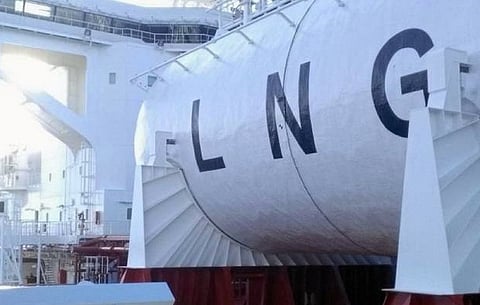US natural gas prices edge up on higher demand, Freeport LNG's return
US natural gas futures edged up about one per cent on Wednesday on forecasts for higher demand during the next two weeks than previously expected and the return to near full service of Freeport LNG's export plant in Texas following a brief decrease. That small price increase occurred despite a big weekly storage build and near-record output.
Front-month gas futures for September delivery on the New York Mercantile Exchange rose 1.3 cents, or 0.5 per cent, to settle at $2.841 per million British thermal units.
In intraday trade on Thursday, the contract fell to just one cent above the eight-month intraday low of $2.764 per mmBtu hit on Wednesday.
The US Energy Information Administration said energy firms added 56 billion cubic feet (bcf) of gas into storage during the week ended August 8.
That figure was close to the 54-bcf build analysts forecast in a Reuters poll and compares with a decrease of two bcf during the same week last year and an average increase of 33 bcf over the 2020-2024 period.
Analysts noted the big storage build, which left stockpiles about seven per cent above the five-year normal for this time of year, was due in part to cooler-than-usual weather last week. The US National Hurricane Center projected Tropical Storm Erin will strengthen into a major hurricane as it moves west across the Atlantic Ocean toward the Bahamas over the next week.
Meteorologists at AccuWeather have said Erin would likely blast Bermuda with wind and rain and produce dangerous beach conditions across the US East Coast next week. Analysts noted the storm would also cool the weather along the US East Coast.
In addition to Erin, the NHC said a disturbance in the western Gulf of Mexico had a 40 per cent chance of strengthening into a tropical cyclone over the next seven days. Even though storms can boost prices by knocking Gulf of Mexico gas production out of service, analysts have said they are more likely to cut demand and prices by shutting LNG export plants and knocking power out to millions of homes and businesses, which reduces the amount of gas that electric generators need to burn.
Only about two per cent of all US gas comes from the federal offshore Gulf of Mexico, while gas-fired power plants supply more than 40 per cent of the nation's electricity.
Financial group LSEG said average gas output in the Lower 48 states has risen to 108.1 billion cubic feet per day so far in August, up from a record monthly high of 107.9 bcfd in July. On a daily basis, however, output has dropped about 3.3 bcfd to a one-month low of 106.4 bcfd on Wednesday since hitting a daily record high of 109.7 bcfd on July 28.
Meteorologists forecast the weather will remain mostly hotter than normal through at least August 29.
LSEG projected average gas demand in the Lower 48 states, including exports, would ease from 111.9 bcfd this week to 111.5 bcfd next week. Those forecasts were higher than LSEG's outlook on Wednesday.
The average amount of gas flowing to the eight big US LNG export plants has risen to 16.2 bcfd so far in August, up from 15.5 bcfd in July. That compares with a record monthly high of 16 bcfd in April.
In Texas, Freeport LNG's export plant was on track to take in more gas on Thursday, in a sign that one of its liquefaction trains likely exited Wednesday's short-term outage, according to a company filing with state regulators and gas flow data from LSEG.
(Reporting by Scott DiSavino in New York; Editing by Kirsten Donovan and Paul Simao)


